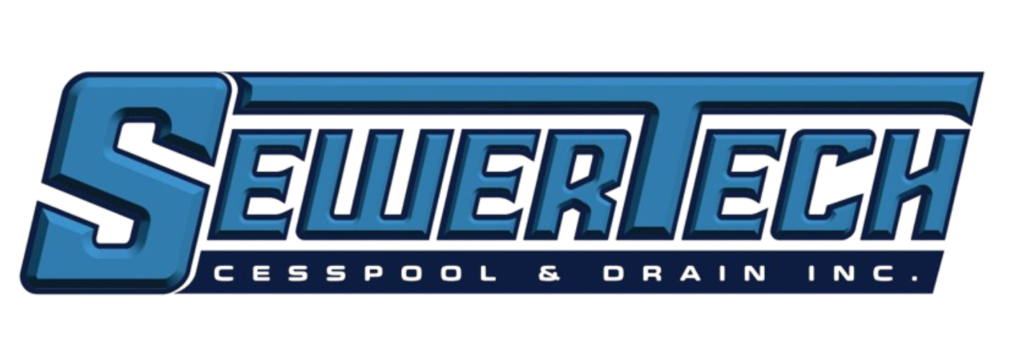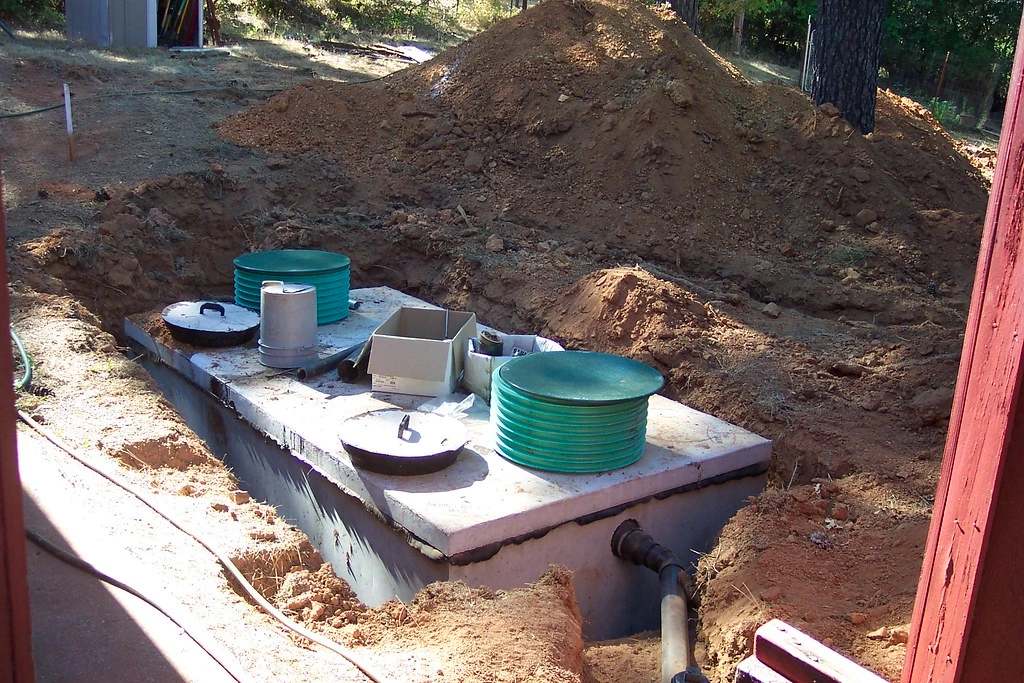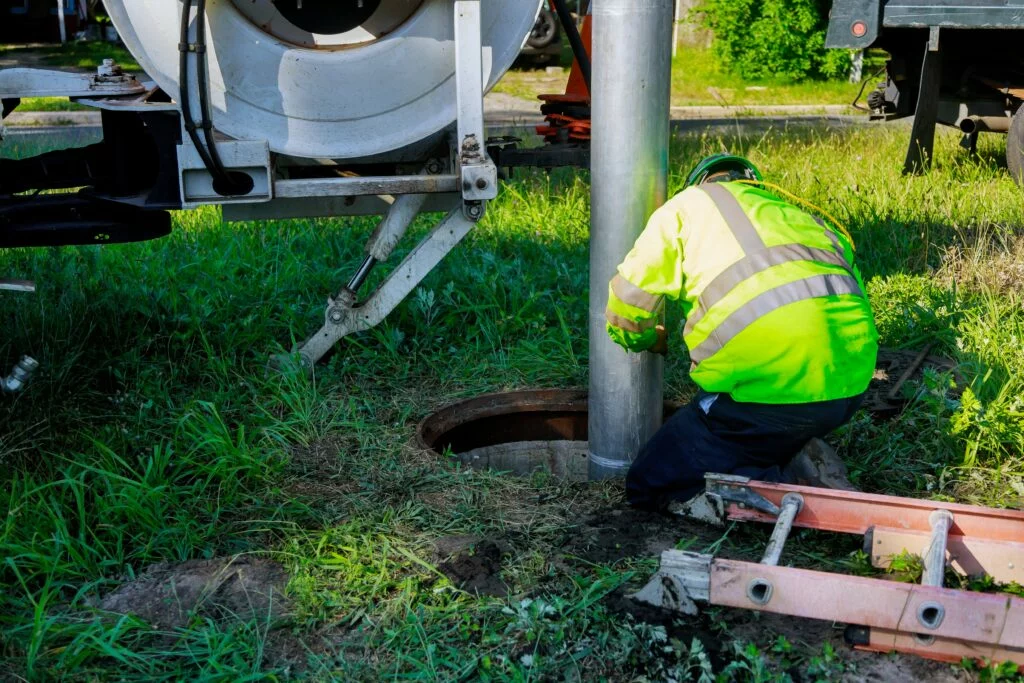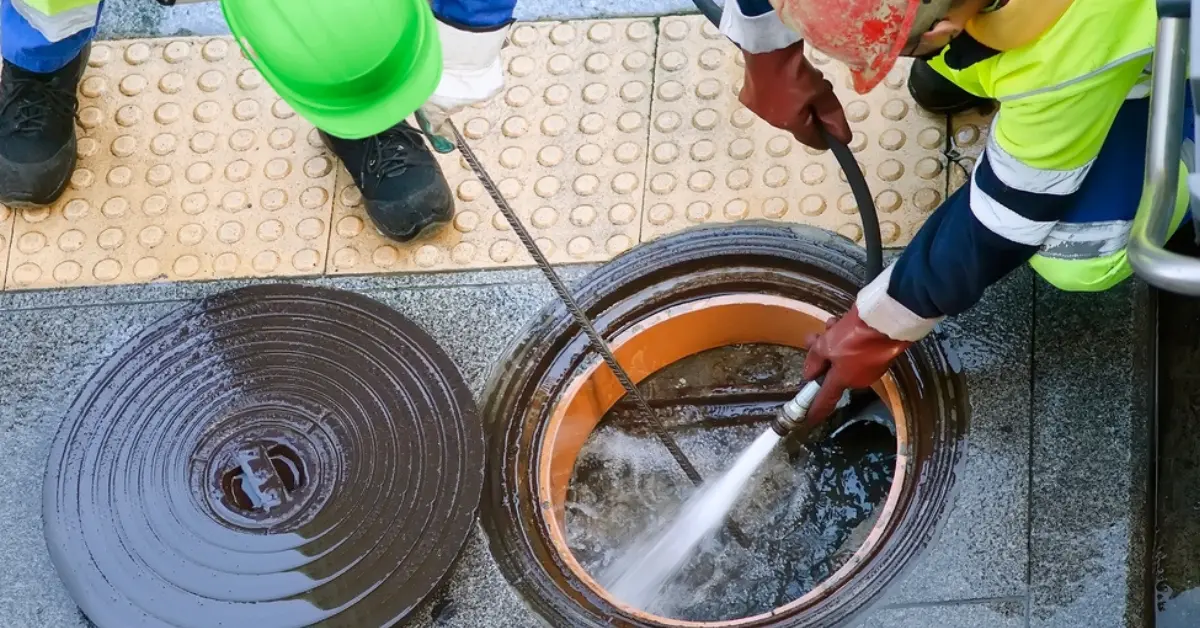A clogged sewer can turn a small annoyance into a major, messy emergency fast. Stop using water, shut off your main valve, and call a local pro through SewerTech LI — your trusted local sewer services, especially in Long Island, where older pipes and tree roots make backups common. This guide walks you through immediate steps, likely causes, safety precautions, and the professional fixes we use to get your drains flowing again.
The first thing you should do is stop using water, turn off your main water valve, and call a professional immediately. A clogged sewer can quickly turn into a messy, expensive disaster. Ignoring it might seem okay at first, but backups can quickly damage your pipes, flood your home, and create nasty odors.
Most clogs happen because of tree roots sneaking into old pipes, grease and food buildup, or flushed wipes and debris. In fact, tree roots alone cause nearly 50% of Long Island sewer backups. Slow drains, strange smells, and soggy lawns they’re all your home’s way of waving a red flag. Catching the problem early can save you a ton of money and stress.
On Long Island, homes have unique challenges, that’s why SewerTech LI is trusted by homeowners. With our local knowledge, skills, and 24/7 emergency service, we get your sewer flowing again. So, ready to take control and protect your home from a clogged sewer?
What is a Clogged Sewer?
A clogged sewer is a blockage in your main drain line, the trunk pipe that carries wastewater from every fixture in the house. When the main line is blocked, water and waste have nowhere to go and can come back up through showers, sinks, floor drains, or toilets. Early signs include slow drains, gurgling toilets, and foul sewer smells.
It’s basically a total traffic jam in the one pipe you can’t live without. Imagine your home’s plumbing as a tree. All the little branches, like your sinks and toilets, feed into a big trunk, the main sewer line. When that trunk gets blocked, guess what happens? The water has to turn around.
So, instead of flowing away, everything you flush or drain starts searching for an escape route inside your home. That’s one of the biggest reasons homeowners in Long Island schedule a camera inspection—to spot blockages before they turn into a disaster. You might notice water bubbling up through a shower drain or flooding your basement floor. It’s every bit as unpleasant as it sounds. Clogged sewers are a common issue in our area, but understanding the cause is the first step toward a real solution.
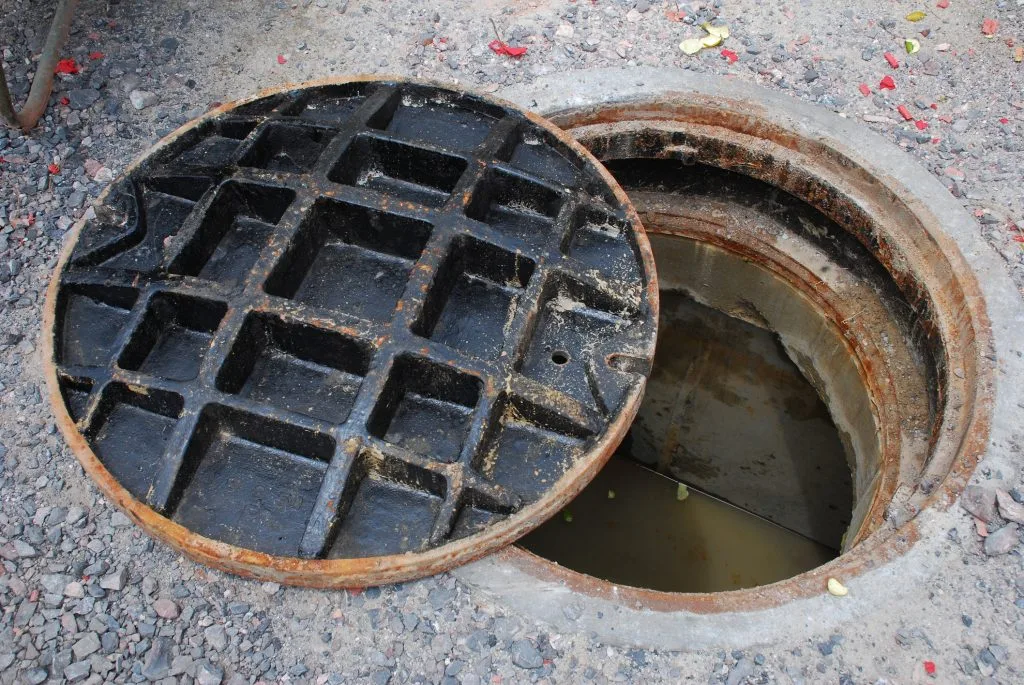
What’s Causing Your Clogged Sewer?
Tree Roots: Nature’s Uninvited Guests
The beautiful trees in your yard have thirsty roots that can travel up to 100 feet in search of water. And guess what? They love the steady supply inside your sewer pipes! A single tree root can infiltrate a pipe joint and expand to fill over 60% of the pipe’s diameter in just 3-5 years. These root blockades are responsible for about 50% of the sewer calls we get, and in most cases, they’re cleared using professional sewer jetting for deep-root removal.. If you’ve got big, shady trees, you’ve probably got roots eyeing your pipes.
The Grease in Your Kitchen
Just 1 cup of grease can coat up to 25 feet of pipe, and it hardens in under an hour. In fact, grease-related blockages account for nearly 30% of kitchen sewer backups. Your garbage disposal is no match for this greasy villain. When grease hardens, only expert drain cleaning can safely clear the buildup.
Flushing Non-Flushable Items
Those “flushable” wipes? Tests show 95% of them don’t break down even after 10 minutes of agitation. Compare that to toilet paper, which dissolves in 4 seconds or less. Each year, American homeowners spend over $1 billion dealing with clogged pipes from improperly flushed items, but regular cesspool pumping and maintenance can help prevent that.
When Your Pipes Get Tired and Retire
The average sewer pipe has a lifespan of 50-100 years, but many Long Island homes have original pipes that are 70+ years old. Ground settling causes about 15% of pipe collapses we see, while normal wear-and-tear accounts for another 25%. Think of it like a section of road that’s completely washed out; no amount of clearing will fix the underlying problem and septic system repairs are often needed.
Heavy Rain and Flooding Issues
Just 2 inches of rainfall in one hour can overwhelm municipal systems, increasing backup incidents by 40%. During major storms, we see emergency calls spike by 300%. Many homeowners don’t realize that standard homeowners’ insurance often doesn’t cover sewer backup from heavy rain unless you have special flood insurance.
The Aging Pipe Blues
If your home was built before 1980, there’s an 80% chance you have clay or cast iron pipes. Clay pipes lose about 1mm of structural integrity every 5 years from ground movement, while cast iron rusts from the inside at a rate of about 1mm every 10 years. Given that most pipes are only 6-8mm thick to begin with, you can see why so many are failing now!
Warning Signs You Have a Clogged Sewer
Listen, your plumbing has its own way of sending up a flare before a real disaster hits. It’s usually not subtle. Here’s what to keep an ear and nose out for.
- Does your toilet sound like a bubbling cauldron?
That gurgle when you flush isn’t just a quirky sound. It’s trapped air fighting a clog deep in the line. Think of it as your pipe’s way of gasping for breath.
- Getting a whiff of something that smells like a swamp?
If there’s a nasty, rotten egg smell hanging around your drains, that’s sewer gas. It should be moving out of your house, not in. That stench is a major red flag.
- See water pulling a surprise appearance in your shower?
Nothing makes you jump faster than flushing the toilet only to see water bubble up in your tub. That’s the wastewater hitting a wall in the main line and taking the easiest escape route, right back into your home.
- Are all your drains moving in slow motion?
One slow drain is a hassle. When every sink, toilet, and shower in the house drains like molasses, you’ve got a central traffic jam. That’s when you should contact our 24/7 emergency service for help.
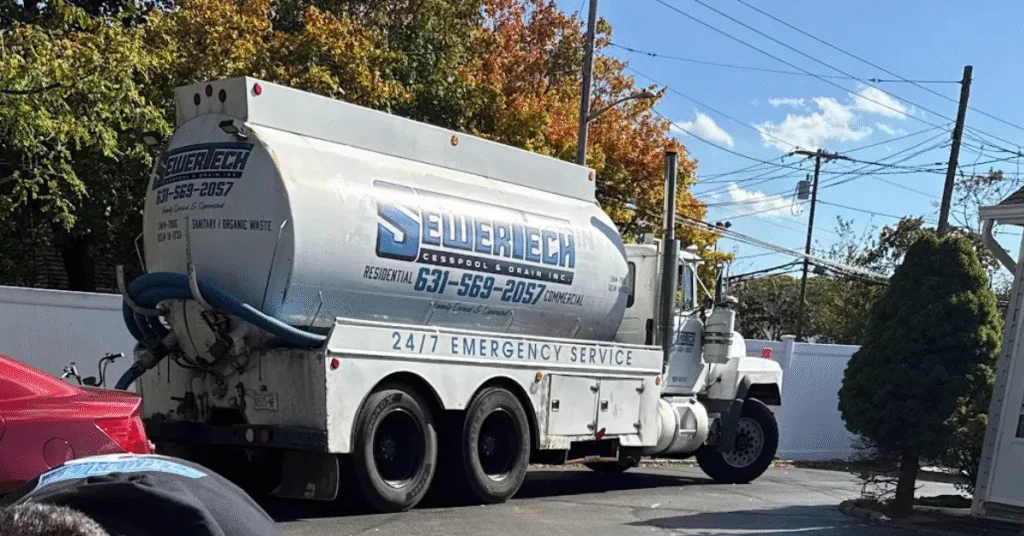
How to Check a Clogged Sewer Line
Step 1. Check the Main Cleanout
First things first: locate your main cleanout. It’s usually near your foundation or driveway. Pop off the cap and peek inside. Standing water or… a little brown surprise? Yup, that’s a main line blockage staring right at you, and a quick camera inspection will reveal what’s causing it.
Okay, we survived step one without gagging. Now, hold your nose, because the next step gets… interesting.
Step 2. Listen and Watch Your Drains
Turn on different faucets, flush a toilet, maybe even run the dishwasher. Hear gurgling? See bubbling? That’s your pipes trying to sing “Help me!” If your pipes had a personality, they’d be sending SOS signals right now. Moving on to the next fun part…
Step 3. Conduct a Visual Inspection
Look around outside for wet spots, soggy lawns, or funky smells near the sewer line. Indoors, sniff for mystery odors creeping from basement drains. These little hints tell you your sewer is in trouble.
It’s like detective work, except your suspects are pipes and smells. Ready for the high-tech stuff? Let’s roll.
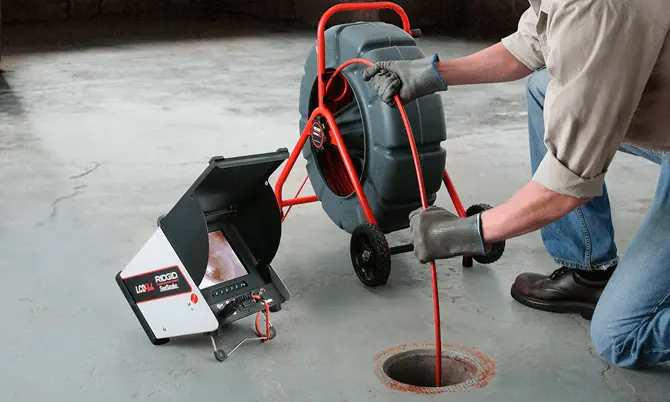
Step 4. Use a Sewer Camera (Professional Step)
Time to go high-tech. Plumbers can snake a small camera down your pipe to see exactly what’s going on. Is it roots, grease, cracks, or collapsed sections? You get a live peek at the “hidden world” under your home.
It’s like sending a GoPro on a mini expedition… in a tunnel full of sludge. Thrilling stuff, really.
Step 5. Identify the Clog Location
Here’s where you figure out who’s really in trouble: is it your property or the street line? If it’s on your side of the sidewalk, it’s your problem. If it’s past the city’s curb, well… that’s their headache.
Think of it like assigning blame after a prank gone wrong but the prank is your sewer, and everyone smells it.
What to Do During a Sewer Emergency
So, your sewer just backed up. Great. Not exactly how anyone plans to spend their day, right? Take a breath, cause panic won’t help, but a few smart moves will.
First thing? Stop using water immediately. Don’t flush the toilet. Don’t run the sink. Don’t even think about starting the washing machine. Every bit of water you send down is going to come right back up. It’s like your house has turned into a very bad water park.
Next, keep your family and pets clear of the mess. Sewage water is nasty stuff, loaded with bacteria you definitely don’t want anywhere near you. Grab some old towels or blankets and block off the area. You’re not cleaning yet; you’re just containing the chaos.
Now, turn off your main water valve. It’s usually near the meter or basement wall. Shutting it off keeps more waste from backing up into your home. Quick tip: label it for next time, because in moments like this, nobody wants to play “find the valve.”
Here’s the big one: don’t try to fix this yourself. I know it’s tempting to grab a plunger and play hero. But sewer backups aren’t your usual DIY clog. You’ll need a licensed plumber like SewerTech LI with proper equipment. Camera scopes, hydro-jetters, and tools that can safely clear the line without wrecking your pipes.
While you wait, take photos or videos of the mess, for insurance. It helps to have proof of the damage if you end up filing a claim. And for your own safety, keep out of the standing water. It’s not just water, it’s, well… everything else.
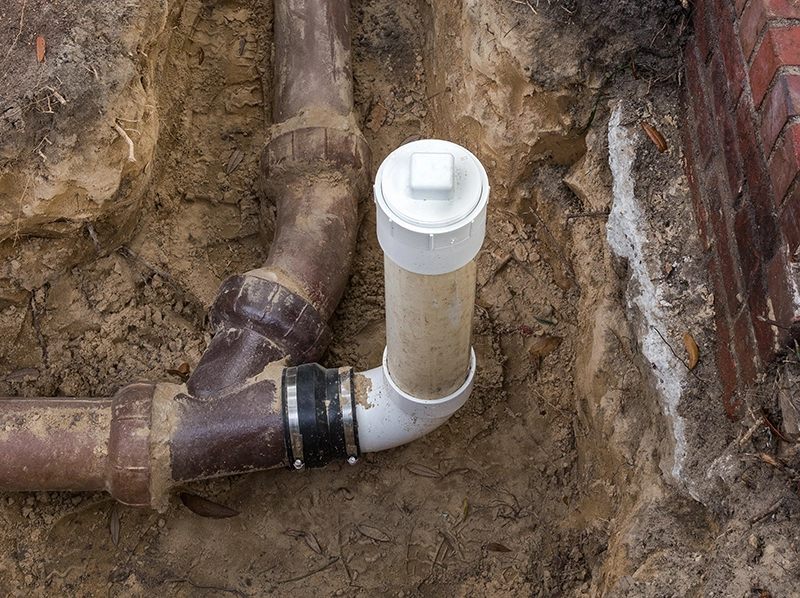
Can You Fix a Clogged Sewer Line Yourself?
When your sewer starts acting up, the first thought is usually, “How hard can it be?” You grab a plunger, maybe some drain cleaner, and hope for a miracle. But here’s the thing: a clogged sewer line isn’t your typical DIY project. What looks like a small clog could actually be deep in the main line.
You might be able to loosen a small blockage, but if your toilet’s gurgling or drains are backing up across the house, it’s time to stop playing plumber. Those problems usually mean the main line is blocked.
And whatever you do, don’t pour chemicals down there. They’ll just eat away at your pipes and cause even bigger trouble later. Sometimes the smartest thing you can do is pick up the phone and let a professional handle it. They’ve got the cameras, the tools, and the nerves of steel for this kind of job.
Professional Sewer Cleaning and Repair Options
Sewer problems can pop up at the worst times, and Long Island homeowners know it all too well. Don’t worry, SewerTech LI is here to handle it. Here’s how we help:
24/7 Emergency Services
Description: Sewer issues don’t wait for business hours. Our Long Island team is on call 24/7, ready to stop backups and prevent damage fast.
Best For: Unexpected backups, overflowing toilets, or foul odors that can’t wait until tomorrow.
Drain Cleaning
Description: Slow sinks or tubs? Our professionals safely clear clogs using snakes or augers, avoiding harsh chemicals that can harm your pipes.
Best For: Drains that are sluggish, frequently clog, or resist a plunger.
Sewer Jetting
Description: For tough clogs caused by grease, roots, or years of buildup, hydro-jetting blasts the pipe clean with high-pressure water. It’s like giving your sewer line a fresh start.
Best For: Lines that clog repeatedly or have heavy buildup that drain cleaning can’t fix.
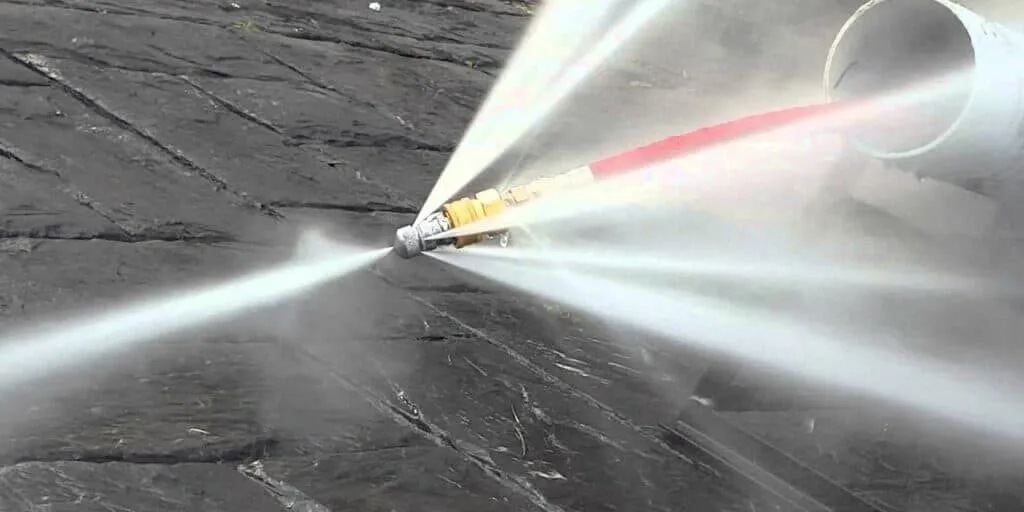
Camera Inspection
Description: Not sure what’s going on underground? We feed a waterproof camera through your pipes to locate cracks, blockages, and root intrusion without digging.
Best For: Persistent clogs, unknown issues, or pre-purchase home inspections on Long Island.
Septic System Repairs vs. Full Replacement
Description: Sometimes the problem is an aging septic system. SewerTech LI can repair or replace systems as needed, keeping your property safe and your pipes flowing.
Best For: Older systems showing repeated backups, soggy spots in the yard, or failing septic components.
Simple Habits to Avoid Future Sewer Clogs
- Start with annual sewer inspections. Think of it like a checkup for your pipes. Catch small issues early and avoid messy emergencies later.
- If you have trees nearby, install root barriers to keep sneaky roots from invading your sewer lines. A backflow preventer is also smart. It stops sewage from backing up during heavy rain.
- Be mindful of what you put down drains. Grease, oil, wipes, and paper towels can quickly create stubborn clogs. A little care goes a long way.
- Finally, replace old pipes before they fail and do small maintenance regularly. Clean strainers, keep drains clear, and your sewer system will thank you.
SewerTech LI’s Local Expertise in Clogged Sewer Repair
Sewer problems always seem to happen at the worst time – during dinner, on weekends, or in the middle of the night. Well, take a deep breath. SewerTech LI has been solving exactly these problems for Long Island homeowners for years.
What makes us different? We actually live and work right here in your community. We know that many LI homes have older clay pipes that tree roots just love to invade. We understand how our local soil conditions can affect your plumbing. This local knowledge means we show up already understanding what’s likely causing your problem – and we come prepared with the right tools to fix it.
When you call us, you’re getting a friend who knows their stuff. We’ll show up fast, explain everything in plain English, and get your home back to normal. So next time your drains act up, and you are searching for sewer services near me anywhere across Long Island. think of us as the friendly face down the street who can help. We’re here for you 24/7, because sewer problems don’t wait for business hours and neither do we.
FAQs About Clogged Sewer Lines
Q1. What is hydro-jetting and is it safe?
Hydro-jetting blasts high-pressure water through your pipes to clear grease, sludge, and small roots. Done by professionals, it’s safe for most pipes. It not only clears clogs but also cleans the pipe walls to prevent future problems.
Q2. How much does it cost to repair a clogged sewer in Long Island?
It depends on the job. Snaking a line can run around $150–$400. Hydro-jetting is usually $300–$800, and full replacements can cost $3,000–$10,000. Factors like pipe type and depth can change the price, so a professional inspection first is smart.
Q3. Can heavy rain cause my sewer to back up?
Absolutely. Heavy rain can overwhelm older or smaller pipes, especially in low-lying areas of Long Island. Even a small clog can turn into a big problem during a storm. That’s why regular maintenance and inspections are key.
Q4. Are chemical drain cleaners safe for sewer lines?
Not really. They might clear a minor clog temporarily but can corrode older pipes and make problems worse. Professionals use safer, more effective tools to clear blockages without damaging your pipes.
Q5. How often should I have my sewer line checked?
You should get your sewer line inspected at least once a year, especially if your pipes are old. If you have lots of trees, clay or cast-iron pipes, or frequent backups, consider twice a year. Regular checkups catch small issues before they become emergencies.
Conclusion
We get that a clogged sewer is the last thing you want to deal with. But now you know what to listen for and when to take action. So, the next time your toilet gurgles or your drain slows to a crawl, what will you do? Wait and hope it fixes itself?
Your friends at SewerTech LI are always here to help. Just give us a call, and we’ll handle the rest. because you deserve peace of mind, not plumbing problems. Let’s keep your home happy together!
Don’t Wait for a Backup — Fix Your Clogged Sewer Fast
